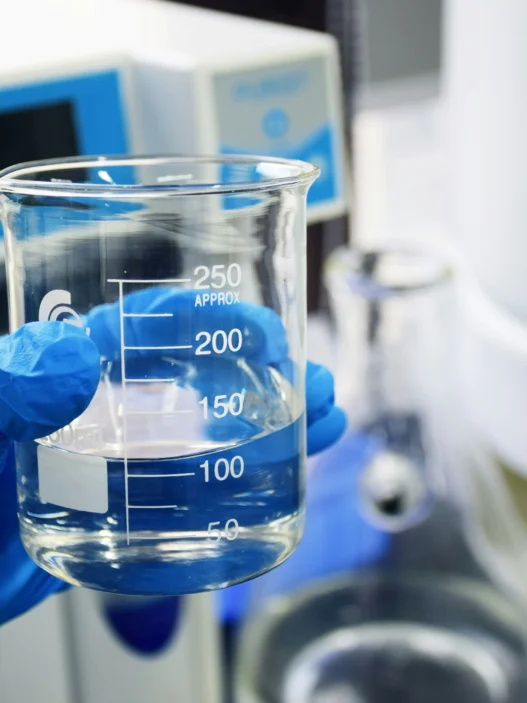2-Acetylnaphthalene, a chemical compound commonly used in the production of dyes and pharmaceuticals, plays a significant role in everyday life. From the vibrant colors found in clothing and textiles to the medication that alleviates common ailments, this compound is essential in numerous industries. Its versatility and applications make it a crucial component in enhancing our daily experiences and overall well-being.
Table of Contents:
- 💡 Commercial Applications
- ⚗️ Chemical & Physical Properties
- 🏭 Production & Procurement
- ⚠️ Safety Considerations
- 🔬 Potential Research Directions
- 🧪 Related Compounds
💡 Commercial Applications
2-Acetylnaphthalene, a chemical compound derived from naphthalene, has various commercial and industrial applications. It is commonly used as a precursor in the production of dyes, specifically in the manufacture of fluorescent whitening agents for textiles. Additionally, 2-Acetylnaphthalene is utilized in the synthesis of certain pharmaceutical compounds due to its versatility in chemical reactions.
In the realm of drug and medication applications, 2-Acetylnaphthalene plays a crucial role in the pharmaceutical industry. It is employed as an intermediate in the synthesis of various drugs, including anti-inflammatory and analgesic medications. Furthermore, researchers utilize 2-Acetylnaphthalene in the production of organic synthesis reagents for drug discovery and development, highlighting its significance in the field of medicine.
⚗️ Chemical & Physical Properties
2-Acetylnaphthalene is a white to light yellow solid with a distinct odor. It is commonly used as a fragrance in perfumes and other cosmetic products due to its pleasant scent.
The molar mass of 2-Acetylnaphthalene is approximately 198.23 g/mol, and its density is about 1.10 g/cm³. Compared to common food items such as sugar (molar mass of 342.3 g/mol) and water (density of 1 g/cm³), 2-Acetylnaphthalene has a lower molar mass and higher density.
2-Acetylnaphthalene has a melting point of around 50-52°C and a boiling point of approximately 307-308°C. In comparison, common food items like butter (melting point of 32-35°C) and olive oil (boiling point of 199-243°C) have lower melting and boiling points.
2-Acetylnaphthalene is insoluble in water but soluble in organic solvents like ethanol. It has a relatively high viscosity, making it difficult to pour or handle in liquid form. Compared to common food items like salt (soluble in water) and vegetable oil (low viscosity), 2-Acetylnaphthalene has poor solubility in water and high viscosity.
🏭 Production & Procurement
2-Acetylnaphthalene, a chemical compound used in various industries, is typically produced through the Friedel-Crafts acylation reaction. In this process, naphthalene is reacted with acetyl chloride in the presence of a Lewis acid catalyst, such as aluminum chloride, to yield 2-Acetylnaphthalene.
Once produced, 2-Acetylnaphthalene can be procured in bulk quantities from chemical suppliers or manufacturers. It is commonly transported in sealed containers, such as drums or tanks, to prevent exposure to moisture or air that could lead to degradation of the compound.
Special precautions must be taken during the transportation of 2-Acetylnaphthalene due to its flammability and potential health hazards. Proper labeling, packaging, and handling procedures must be followed to ensure the safe and secure transport of this chemical compound.
⚠️ Safety Considerations
Safety considerations for 2-Acetylnaphthalene revolve around its potential hazards, including its flammable nature. This compound should be stored in a cool, dry, well-ventilated area away from sources of ignition. Additionally, personal protective equipment such as gloves, goggles, and lab coat should be worn when handling this chemical to prevent skin contact and inhalation.
Hazard statements for 2-Acetylnaphthalene include its flammable properties, potential for causing skin and eye irritation upon contact, and its harmful effects if swallowed or inhaled. This compound may also be harmful to aquatic life with long-lasting effects, and precautions should be taken to prevent its release into the environment.
Precautionary statements for 2-Acetylnaphthalene include avoiding skin and eye contact by wearing appropriate personal protective equipment, such as gloves and goggles. This compound should only be used in a well-ventilated area to prevent inhalation of vapors, and spills should be cleaned up immediately to prevent environmental contamination. Proper storage and handling procedures should be followed to minimize the risk of accidents and exposure to this chemical.
🔬 Potential Research Directions
One potential research direction for 2-Acetylnaphthalene involves studying its potential applications in organic synthesis. Researchers may investigate its reactivity with various nucleophiles and electrophiles to explore new synthetic pathways and functional group transformations.
Another research direction for 2-Acetylnaphthalene could be focused on its potential biological activities. Scientists may examine its potential as an anti-inflammatory agent, investigate its interaction with specific biological targets, or explore its potential as a lead compound for the development of new pharmaceuticals.
Additionally, research could be conducted on the environmental impact of 2-Acetylnaphthalene. Studies could focus on its persistence and toxicity in the environment, as well as its potential degradation pathways. This research could provide valuable information for risk assessment and environmental monitoring efforts.
🧪 Related Compounds
One similar compound to 2-Acetylnaphthalene is 1-Acetylnaphthalene, which shares a similar molecular structure but with the acetyl group attached to the first carbon of the naphthalene ring. This compound also exhibits aromatic properties and is commonly used in organic synthesis reactions due to its reactivity.
Another compound with a comparable structure to 2-Acetylnaphthalene is 2-Tert-Butylcyclohexanol, which consists of a cyclohexane ring with a tert-butyl group attached to the second carbon. Despite the different ring system, this compound shares similarities in terms of functional groups attached to aromatic rings, making it a relevant comparison to 2-Acetylnaphthalene in organic chemistry studies.
Furthermore, 2-Ethyl-1,4-dimethylcyclohexane is another compound that can be likened to 2-Acetylnaphthalene due to its cyclohexane ring structure with ethyl and methyl groups attached to specific carbons. This compound showcases the versatility and variations in molecular structures that possess similar properties to 2-Acetylnaphthalene, highlighting the complexity and diversity of organic compounds in chemical research.





